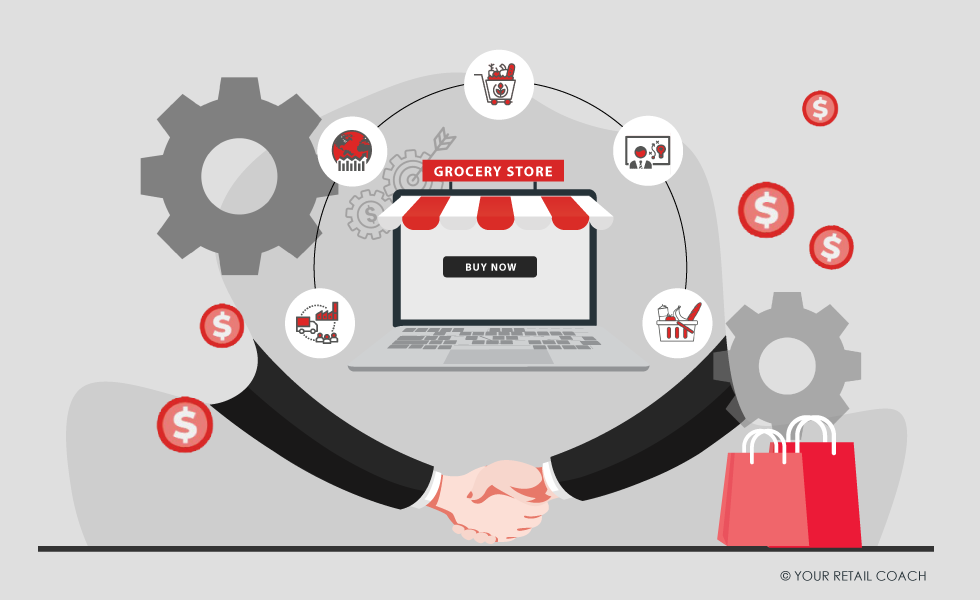The grocery industry today operates on tight profit margins. At the same time, it faces growing pressure for speed, freshness, and accurate inventory. Electronic Document Exchange (EDI) helps grocers and suppliers meet these demands. It automates business communication and streamlines operations. This technology brings major benefits to the entire grocery supply chain.
The Evolution of Document Management in Grocery Supply Chains
In the past, grocery stores used paper for managing documents. They relied on physical purchase orders, paper invoices, and faxed delivery confirmations. These methods were slow and caused many problems. They led to data entry errors, delays, and high costs. They also gave poor visibility into operations.
To stay competitive, many grocery companies started switching to digital systems. Big retailers like Albertsons saw value in using EDI systems. Albertsons’ EDI setup was a big step forward. It used standard document formats and allowed automatic communication with suppliers. This changed how their supply chain worked.
Recent tech changes have made digital document exchange more accessible. Cloud computing and simple integration tools help even small companies use these systems. Now, many players in the grocery supply chain can benefit from them.
Benefits of EDI in Grocery Operations
Faster Product Movement
Groceries have short shelf lives. Fast processing is critical. EDI helps by speeding up documentation. Produce suppliers using EDI can reduce processing times from over 24 hours to under 30 minutes. This helps keep food fresh and available.
One produce distributor reported a 74%-time reduction in document handling after going digital. This helped their products stay fresh longer. Companies using systems like Albertsons EDI see 65–85% faster document processing compared to manual methods. These gains lead to quicker inventory turnover and shorter lead times.
Better Inventory Control
EDI gives better visibility into inventory. Retailers can see supplier stock levels. Suppliers also get forecasts and demand plans from retailers. This helps avoid overstocking and stockouts.
Studies show that EDI can reduce out-of-stock problems by 15–25%. At the same time, it lowers inventory costs by 10–20%. These results bring big financial benefits in the low-margin grocery industry.
Fewer Errors and Better Quality
Manual paperwork often causes errors in orders, prices, and deliveries. These mistakes lead to shipping problems and payment issues. EDI removes most of these problems by cutting out manual data entry.
Many case studies show that error rates fall from 3–5% to less than 0.5% after EDI adoption. This saves time and effort spent fixing mistakes.
Improved Traceability
Food safety rules and customer expectations require strong traceability. EDI supports this need. It lets systems share data like lot codes, production dates, and sources.
If there’s a recall, grocers can quickly trace and remove affected items. This protects both the customer and the brand. It also helps reduce losses by targeting the recall more precisely.
The Future of Electronic Document Exchange in Grocery
API-EDI Hybrids
Traditional EDI is still widely used in grocery supply chains. But APIs allow faster real-time communication. Many companies now use a mix of both. APIs offer flexibility, while EDI provides standard formats.
Platforms like Shopify EDI show this trend. They combine classic document exchange with modern API integration.
AI and Advanced Analytics
With more data moving through digital systems, analytics can add extra value. AI tools can spot trends, predict issues, and suggest improvements. This helps shift supply chain management from reactive to proactive.
Blockchain for Better Tracking
Some grocers are now testing blockchain. This tech gives tamper-proof records of product movement. It builds on the base that EDI creates. Blockchain can add another layer of trust and transparency.
Conclusion
Grocery retail is more competitive than ever. Efficient supply chains are key to success. Manual paperwork now puts companies at a disadvantage. EDI is no longer optional—it’s essential.
Systems like Albertsons EDI or even simple tools like Shopify EDI give grocers a big edge. They improve speed, accuracy, and service. These benefits are vital in a fast-moving market.Companies that invest in EDI are preparing for a stronger, more agile future.



